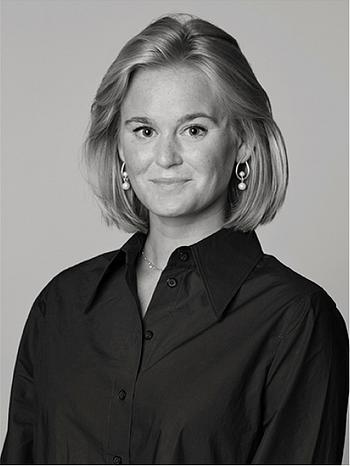Lotte Laserstein
Halfseated woman
Signed Lotte Laserstein. Pencil on paper 20 x 24 cm.
Provenance
Acquired directly from the artist.
Private collection.
More information
Lotte Laserstein (1898–1993) was born in East Prussia. Her father passed away in 1902, and she was raised by her mother and grandmother in what is now Gdansk and in Berlin. In 1927, she graduated from the Berlin Academy of Arts, as one of the first female students, and immediately achieved great success. She quickly became known in the city's art scene for her skilled portrait painting, particularly of young modern women in the Weimar Republic of the 1920s. When the Nazis came to power in 1933, her promising career was interrupted as she was classified as three-quarters Jewish according to the ideology of the time (her paternal and maternal grandparents were Jewish, but not her parents). This led to her increasing exclusion from the art scene.
However, an invitation to exhibit at Galerie Moderne in Stockholm in 1937 opened up an opportunity for her to leave her homeland. She traveled from Berlin in 1937 and managed to ship the majority of her artworks to Stockholm. The exhibition was a success, and she was able to remain in Sweden on a three-month visa. In Stockholm, she made new friends, some of whom helped her enter into a marriage of convenience, which granted her Swedish citizenship.
Laserstein tried to build a new life in Stockholm, primarily supporting herself through portrait commissions. She struggled to break into new art circles, as modernism and abstract painting were being promoted at the time. She applied to become a member of the Swedish Artists' National Organization (KRO), but was denied on several occasions, which was a personal defeat. She was not considered modern enough, likely due to her consistent adherence to realism during the post-war decades dominated by artistic abstraction, which may have contributed to her lack of a major breakthrough in Sweden.
Laserstein received classical academic training, and her works often contain references to art history. However, during her artistically expansive phase in the 1920s and 1930s, she also drew inspiration from contemporary popular culture in her subjects. She was influenced by the liberating fashion for women at the time; wearing loose-fitting dresses, cutting hair short, dressing and accentuating androgynous features. Laserstein often depicted modern emancipated women engaging in sports or sitting alone in cafés. Her art is counted among "New Objectivity" and is both traditionally figurative and discreetly rebellious. The human figure was Laserstein's primary subject, and she painted around 2000 portraits in her lifetime. She was able to support herself through her art throughout her life, with clients including well-known personalities from the aristocracy as well as from politics, business, and culture.
In 1952, Lotte Laserstein received a commission to portray the then-governor couple of Kalmar, Ruben and Helga Wagnsson. In connection with this, she began commuting between Kalmar and Stockholm. She took a liking to Öland, where she bought a summer cottage in the mid-1950s. In 1959, she settled permanently in Kalmar. Laserstein continued to paint portraits but also devoted herself to floral still lifes and landscapes. At exhibitions in Kalmar, she presented new oils, drawings, watercolors, and pastels. Her studio and residence were located on Norra Långgatan in Kalmar, where her central works from the Berlin period were displayed.
In 1987, Laserstein's paintings were recognized at two prestigious galleries in London, which marked the beginning of an international rediscovery. In 2003, she was also recognized in Germany through an exhibition at the Museum Ephraim-Palais in Berlin. The German exhibition and its catalog were managed by Anna-Carola Krausse, who also wrote her doctoral thesis on Lotte Laserstein and a presentation of her life and work. "Meine einzige Wirklichkeit" (My Only Reality) was the theme of the Berlin exhibition, a quote from Lotte Laserstein who saw art as the reality she lived in and for. In Sweden, her artistry was first highlighted in a memorial exhibition at the Kalmar Museum in 2004, then at the Jewish Museum and later at Bror Hjorth's House in Uppsala.
Lotte Laserstein is currently featured in the exhibition "A Divided Life," November 11, 2023 – April 14, 2024, at the Moderna Museet in Stockholm. The exhibition, which was first shown at the Moderna Museet in Malmö from May 6 – October 1, 2023, and curated by Anna-Carola Krausse and Iris Müller-Westermann, is the largest to date of Laserstein's art in the Nordic countries.

































